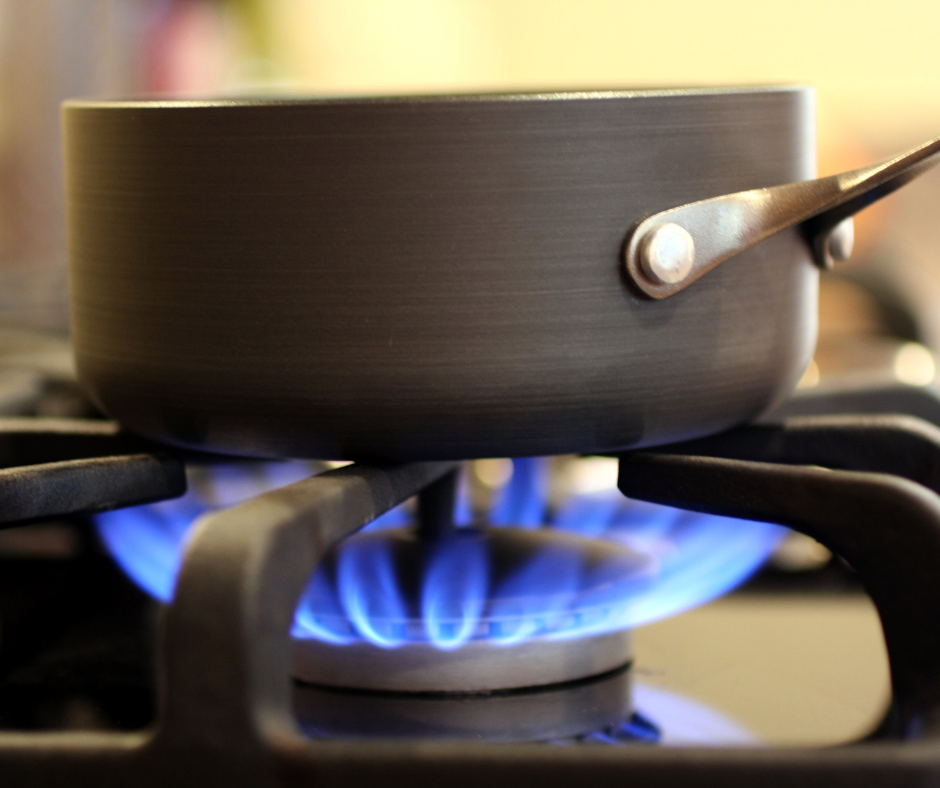Many Wisconsinites cook with gas stoves, but recent studies show that these appliances emit dangerous pollutants into homes. According to Wisconsin Public Radio, 34% of Wisconsin households cook primarily with gas appliances. Gas stoves, which heat by burning fossil gas piped into homes, emit pollutants such as nitrogen dioxide (NO2), carbon monoxide (CO), and particulate matter (PM2.5) whenever gas combustion occurs. Even when stoves are turned off, they can emit unburned methane.
According to a report published by several organizations including Physicians for Social Responsibility (PSR), these pollutants can have serious health effects. NO2 can increase asthma risks for children, cause respiratory illnesses in adults, and may cause cardiovascular and reproductive issues. In fact, 12.7% of current childhood asthma in the US is attributable to gas stove use, according to a study in the International Journal of Environmental Research and Public Health. Additionally, PM2.5 and CO can both have serious respiratory and cardiovascular health effects. More recent studies have shown that gas stoves emit other dangerous pollutants, such as benzene, a carcinogen linked to leukemia.
The PSR report specifies that health risks from these indoor air pollutants are higher for children because of their higher breathing rates and immature respiratory and immune systems. Jayne Black, a former pre-K teacher and organizer for Wisconsin Moms Clean Air Force, stresses how important it is that Wisconsinites know about gas appliances’ effects on indoor air quality. “I have a son with asthma… so the quality of indoor air, to me, is a huge concern.” Black states that people who cook with gas stoves can engage in many strategies to protect their health.
Homeowners
Homeowners with gas stoves should consider upgrading to electric stoves, preferably induction stoves. Induction stoves are the most energy efficient type of electric stove and do not emit dangerous air pollutants. Homeowners should not be worried about significant changes to the method or quality of their cooking if they make such a switch. Chris Meyer, co-owner of Zoe’s Pizzeria in Waunakee, raves about the induction stovetops and pizza ovens that were installed in his restaurant. While pizza cooking took some slight timing adjustments, Chris states that the upgrades were well worth it. Induction stoves are also safer, as the cooktops do not get hot, and the oven does not heat up surrounding spaces as with gas stoves.

When considering an upgrade, homeowners should weigh several factors. Older stoves are less efficient and, according to the PSR report, emit more NO2. According to Architectural Digest, the average lifespan of a stove is 15 years, so if a stove is approaching its 15th birthday, consider a replacement.
Homeowners should also consider other factors like how frequently they cook, the size of their indoor space, and the functionality of their rangehood. Wisconsin does not require kitchen range hoods to be connected to outdoor air.
Currently, induction stoves are more expensive than gas stoves, with cheaper models being slightly more than $1000. However, a program funded by the Inflation Reduction Act will soon be offering rebates for energy efficient appliances such as induction stoves to Wisconsinites. Additionally, the efficiency of induction stoves may lead to lower utility bills.
Renters and Lower-Income Households
For renters and lower-income homeowners, reducing the use of gas stoves is the most impactful change they can make. Smaller cooking appliances such as air fryers and induction hot plates should be used whenever possible.
If something must be cooked on the stove, there are several safety measures to reduce indoor air pollution. Strategies include turning on the range hood when cooking, keeping windows open during cooking, and regularly replacing indoor air filters.
Importantly, indoor air pollution from gas appliances is an environmental justice issue. According to RMI, low-income, black, and Hispanic children are the most disproportionately affected by gas appliance pollution because of factors such as the size of living spaces and the age of appliances.

